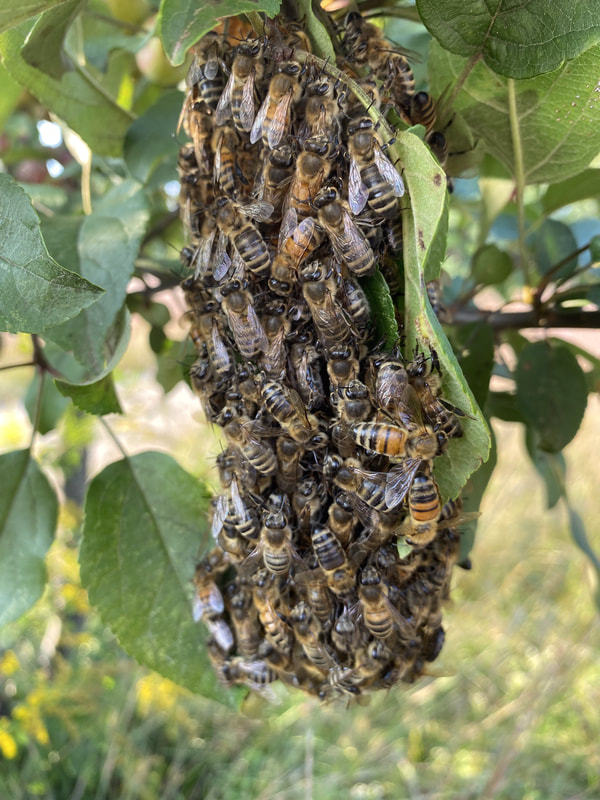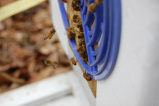|
We had a great overview of our business and the fight to preserve both pollinators and farmlands here in the Seacoast of New Hampshire to the Portsmouth Rotary today. It was a great group of people that had some really in-depth and thoughtful questions. We also brought along an observation hive for the members to view.
The event was held at the Portsmouth Country Club which was a bit ironic since we aren't the biggest fans of country clubs, fairways and greens that are usually barren of any significant forage for pollinators. In fact, many of the area golf courses were built on dairy farms that were once a big part of the landscape of the Seacoast. Putting that aside, we reviewed the goals of SeaBee Honey with the team and provided an overview of the pollinators of our region and how folks can help both honey bees and native pollinators thrive. All and all, it was a great event and the audience was engaged in our discussion on this beautiful fall day. As I left the club, I looked out to one of the fairways and thought what a great place for some clover.;)
0 Comments
We had a recent situation where we found a small swarm of bees clinging to an apple tree in our Rye apiary. This was a big surprise since none of our hives had any signs of throwing a swarm and the cluster was very small. Furthermore, the coloring of the bees also was a bit too dark since the majority of our bees, in this apiary, are the orange colored Italian honey bees. The cluster was small and hardly noticeable but it held together on a branch in a tight arrangement. Upon closer review, the bees looked to be a tad lethargic and hungry. Some forager bees were coming back with pollen to feed the hive but there did not appear to be any work to look for a new hive location. Our guess is the swarm may have tried to enter an existing hive that one of the scouts had found and was beaten back and needed to retreat to a tree branch. We need to
Product provenance: Farms to Carts gives insight into local food through QR codesThis is a great article on our new SeaBee Honey Tracker and the Farms to Carts™ platform that it is built on. This easy to use product has made our products fully traceable back to the hive and apiary where it was harvested. From hive to bottle. Read it here: Excerpts from the articleSeaBee Honey jars have a cute little cartoon bee on the front label, but it’s the back label that holds the key to learning where that honey comes from, right down to the hive. Shoppers simply open up that QR code scanner on a smartphone, line it up with the code and voila! a world of information pops up. For SeaBee Honey, shoppers can find out more about the batch of honey they’re buying including the Flavor Profile, harvest season, type of honey bee that created it, and the town and apiary the honey comes from, right down to the hive. For example, the RYEGAR0521, one of the 2021 batches, is a late summer honey created by Italian bees. The honey type is wildflower, color is amber, and it was harvested in Rye, N.H., at the Tucker Pollinator Sanctuary from the Saratoga hive. Dive a little deeper and learn about the local farm and more about the origin of the bees. Other information includes harvest, extract, bottle and ship dates as well as that flavor profile. |
Details
SEABEE HONEY BLOGAuthorA beekeeper in New Hampshire [email protected] Archives
December 2023
Categories
All
|


 RSS Feed
RSS Feed